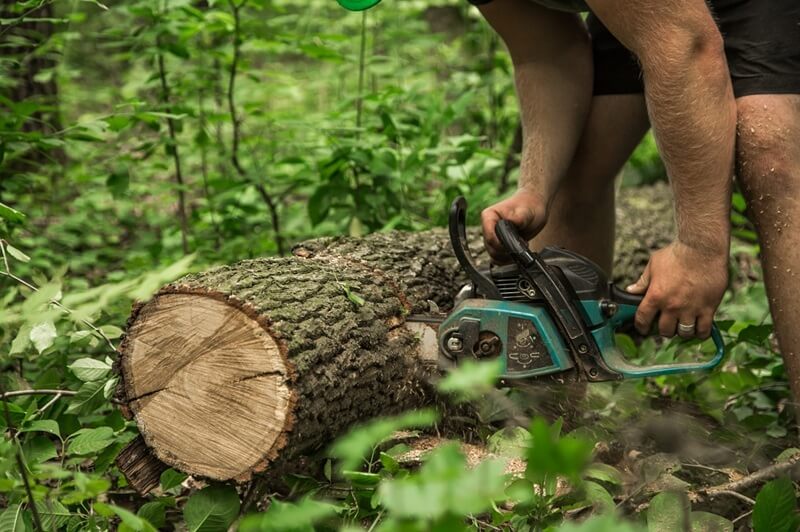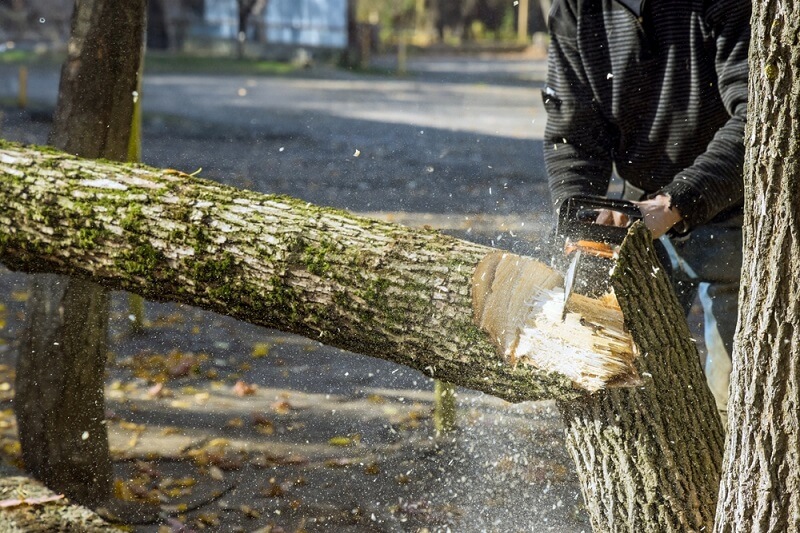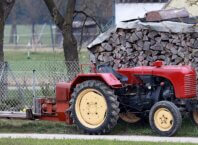Do you look outside after a storm and get that sick feeling seeing a giant tree leaning ever so precariously toward your house? Do you see long fissures running down the trunk of your tree, wondering if it could account for some serious liability? Well, what does a tree emergency entail, and when should you really pick up the phone to call for help right then?
Understanding what constitutes an emergency versus a wait issue could save you thousands of dollars in emergency tree removal in Melbourne-not to mention keeping your family safe. Storm damage, disease, or structural failure are sometimes evils that can be faced head-on at a moment’s notice. Pruning and regular maintenance of a tree may be costly but not compared to what costs are incurred when a tree falls.
This is the guide that will cover everything you need to know about emergency tree services in Melbourne. Recognizing warning signs to understanding the differences in tree trimming costs, as well as finding reliable 24/7 services near you-all the basics that could help you in making the right choice when every minute counts. The true cost that tree trimming involves during emergencies, what to expect during the removal process, and how regular tree maintenance might prevent these heart-stopping situations from arising in the first place, will all be learned here.
What constitutes emergency tree removal?

What is Emergency Tree Condition?
Not all trees with problems need immediate attention, of course, but there are certain problems that require urgent actions. Hence, an emergency tree is any tree threatening immediate danger to life, property, or vital services. This would include the most common: Trees that fall onto a building or a car or across a road-and trees hanging dangerously after having been damaged by storms. Severe leans may suddenly develop, especially towards structures, and the biggest branches of the trees could also be hanging by a thread.
The main difference between an emergency situation and other types of trees trimming and prunes is the immediacy of danger. If a tree could potentially crush emergency access routes or hit power lines at any moment, that counts as an honest-to-goodness emergency. Likewise, in cases with previous damage from a tree but where the tree remains unstable, it needs immediate attention from a qualified person to stop the problem from worsening.
The Difference Between Emergency Removal and Regular Tree Trimming
Regular tree trimming includes all the tree care tasks intended to maintain healthy tree growth, make them more attractive, and most importantly, prevent potential problems from occurring in the future. Unlike routine maintenance, where arborists typically have set schedules to work methodically, this tree trimming cost intends to reflect planned tree care, amounting from a few hundred to several thousand dollars, depending on their diameter.
Contrary to emergency removal, immediate response is necessary regardless of the time of day or the weather. Because these scenarios are urgent, crews must work very quickly without compromising safety standards, which often leads to dangerous conditions as well as the compromised state of the trees themselves. Urgency needing special equipment and other crew members to carry out an emergency service implies why an emergency service is priced higher than the usual price for general pruning services.
Most Common Reasons for Tree Emergencies in Melbourne
Tree emergency conditions have highly favoured the volatile weather patterns in Melbourne. The majority of emergency calls during winter are related to the intense storms that bring strong winds and heavy showers. Either way, such weather events tend to topple even the healthiest of trees, exposing epic fail points in already compromised specimens.
A fungal infection weakens the roots as well as the integrity of the entire line of trunks over the years, but under slight temperature conditions, sudden collapse occurs. Another point in that category would be poor tree maintenance, including the way of not maintaining an insufficient tree topping or improper pruning, which creates weak points in the systems that eventually fail with much sharper edges. Impacts from construction damage to root systems are unlikely to cause immediate damage, but in many instances will destabilize trees months or even years later.
What Happens During Emergency Tree Removal?
Initial Assessment on Safety
Professional emergency crews begin with total safety evaluation before any rescission was struck. An exclusion zone is formed ensuring that no unauthorized persons can access the danger area of the area. The team leader assesses structural integrity, pinpointing weak points and plans safest method of removal.
Check for electrical hazard, check nearby structures, check what equipment is necessary, and other considerations. Crews also coordinate with utility companies if power lines are involved. They will check conditions at the site to ensure that the equipment is placed stably and identify underground services that may be affected. This thorough assessment takes time but prevents accidents and further damages.
Equipment and Techniques for Emergency Situations
Typically, emergency operations need specialized equipment, which in this case could not really classify as anything but ‘typical’ tools for branch trimming. Heavy-duty chainsaws-some with bars over one meter long-cut tree sections from the trunk out. Cranes are sometimes required for trees that are a threat to structures.
Using ropes, pulleys, and lowering devices as rigging systems for the section falling can precisely be controlled by crew members. In tight spaces, sectional dismantling techniques remove a tree bit by bit from top to bottom. Emergency lighting equipment allows for safe night work. Emergency response vehicles carry considerable inventories of tools to handle whatever out-of-the-ordinary situations arise at the site.
How Much Time Will It Take for Emergency Removal?
Consequently, the time span in response to an emergency varies greatly depending on the circumstances. For instance, simply removing fallen trees that block driveways would take less than two hours to get done. Whereas, in the case of large trees that are caught up in the power lines or require crane work, it might take more than a few days. Initial “making-safe” work is purely immediate-the crews generally do the speedy removal of any immediate dangers once on-site.
Complete removal and cleanup represent different phases. After clearing immediate hazards, crews may return during daylight hours to finish the job. Understandably, severe impacts on residues will include high winds or even lightning, which can totally halt work for safety reasons. Property owners must expect some disruption, but safety is greater than the need for speed.
Dealing with Power Lines and Other Hazards
Power lines include some of the most serious emergency situations; never try to DIY tree removal from under electric structures, even dead trees will conduct electricity if there’s moisture in the air. Professional crews coordinate the power companies isolating the lines for their work.
Other hazards are gas lines, water mains and even telecommunications cables, requiring utmost concern when dealing with those. Leaning trees against the structures should be disassembled carefully to avoid further damage. Crews apply specialized techniques such as cabling to keep trees temporarily stable while developing a safe removal strategy.
The Real Price of Postponed Emergency Tree Removal

Assessing Damage Risks to Properties and Associated Insurance Complications
The worst thing, however, is putting off emergency tree removal. For all one knows, the tree, which today appears to be safe, will drop tomorrow, turning the small trimming operation into massive property repair bills. A single roof replacement alone may cost more than $50,000, which could definitely dwarf even the most expensive rates for emergency removals.
Insurance complications multiply delays causing damage that could have been avoided, which may also lead to claims denials if it is found by insurers that you ignored apparent hazards. Making a record of potential hazards becomes very necessary- photograph the trees so that at least leave evidence for insurance claims, save all those quotes obtained. Not all polices contain clauses that require immediate hazard mitigation just because dangers are apparent. Know them before an emergency occurs to avoid expensive disputes on coverage.
Safety Hazards for Your Family and Neighbours
A delay in removal harms life as well as saving money. Numerous Australians die each year as a result of falling branches. Hundreds more are badly injured. Children play beneath such trees and are similarly endangered, as are pets that do not know of the overhead dangers. Beyond fences, there are also these hazards.
When a tree is problematic for your property, its problematic nature is extended to your neighbours as well. Even if no one’s hurt as a result, there tends to be ongoing tension and possible legal issues. The mental stress of living with dangerous trees would obviously take a toll on wellness of the mind, too. It takes a toll on the peace of mind for your family to be able to think of impending doom whenever strong winds blow.
Green Property Responsibility to Tree Owners in Victoria
In most cases, damage caused by trees belongs to liability on the property owner’s shoulders. One knows or ought to know that a tree has become hazardous, hence he or she will be responsible for damages caused by it, per this specification-under the condition of “reasonable man” since one cannot expect obvious dangers to be ignored.
Local councils also give orders to conduct tree work under threat of fines over $10,000. They may also carry out the works themselves and bill you with added administrative penalties. It is possible to be charged criminally for causing injury or death through negligence. These legal realities make emergency tree removal costs seem quite small compared to possible litigation expenses.
How Routine Tree Maintenance Reduces Emergency Costs
Regular expenditure on tree maintenance significantly cuts down on the probability of emergencies happening. Annual tree pruning costs usually range from $500 to $1,500 on each of them, unlike spending on emergencies that would otherwise ruin the whole budget. Regular trimming and pruning also allow the early detection of problems so that the cure can be simple and cheap.
Evidence of maintenance is very important during insurance claims and sale of property. They show responsible ownership and might even lower premiums. Because well-maintained trees add value to your property, poorly maintained ones will prevent prospective buyers or lower selling prices. Tree maintenance is part of regular property upkeep-everything from painting to gutter cleaning.
Conclusion
Emergency tree removal is one of those decisions where all the preparation and knowledge in the world can massively change outcomes and costs. Property owners face such dilemmas on a daily basis throughout Melbourne, whether from sudden storm damage, disease, or a slow destruction process that eventually develops into a crisis point. The public will learn how to recognize signs of an imminent tree emergency, realize when immediate action is necessary, and have reliable contacts of professionals immediately available to turn a disaster into something quite manageable.







